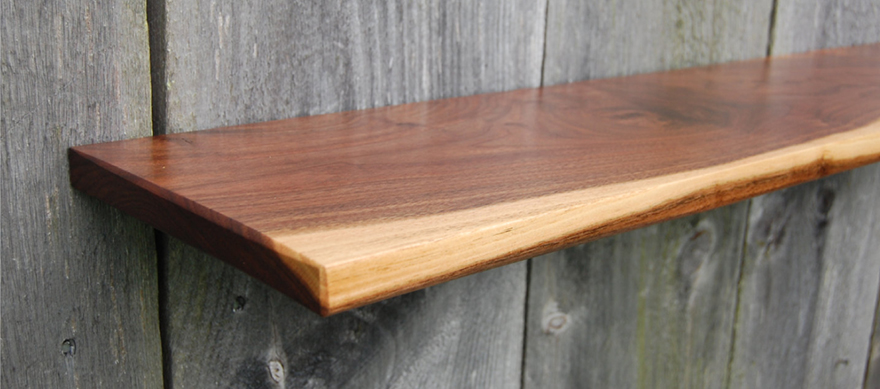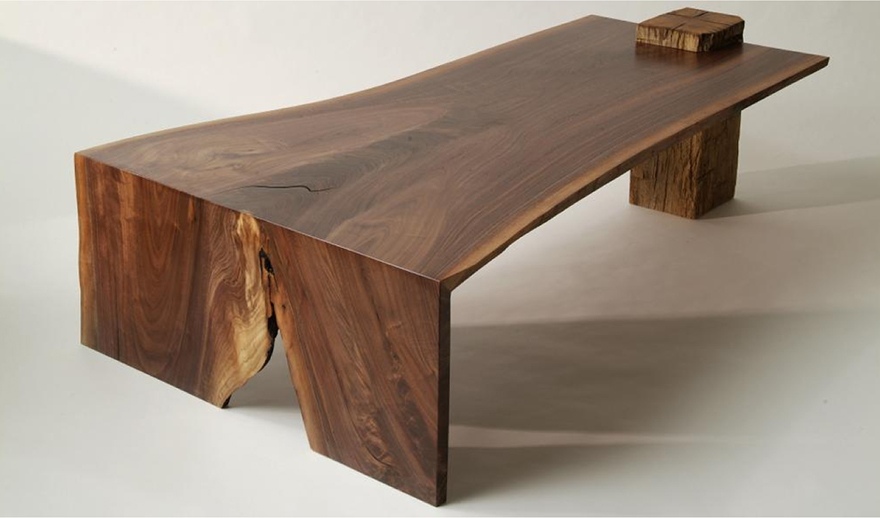An Introduction To Wood Species, Part 5: Walnut

This Wood Species series of entries comes to us from guest writer Rob Wilkey, an Atlanta-based woodworker and industrial designer whose expertise is in small home goods, furniture, and large installations.
Over the next few articles, we'll be analyzing a number of common North American wood species. This week's featured species:

Many species of walnut exist throughout the world, but the most common species in North America is Black Walnut. The tree grows abundantly across the continent, but doesn't yield as much wood as other larger species, such as oak and maple. Black Walnut's favorable working characteristics and rich color make it one of the most valued domestic lumbers. The heartwood of the tree ranges from dark tan to a deep chocolate brown, sometimes with streaks of purple and green hues. The sapwood is a very pale yellow, and can add a nice touch of contrast when incorporated in a project.

Black Walnut is semi-ring porous, with medium-sized pores throughout and larger pores at the edge of its growth rings. The wood has a low level of shrinkage when drying, and suffers very little seasonal movement. At 1000lbf Janka, the wood isn't exceptionally hard, but can stand up to a fair amount of abuse. Walnut is straight-grained and remarkably easy to work with in almost every application. The wood cuts and sands evenly, finishes nicely, glues well, and can be steam-bent with stable and predictable results.

Walnut is commonly used for furniture, flooring, countertops, and small projects. It has a higher price tag than maple and oak, but is still much less expensive than most imported lumbers. Certain boards, however, such as those with exceptionally even grain and those with heavy figure, can be much more expensive than standard grade walnut. The figured grain found in walnut isn't usually as expressive as the figure that maple can exhibit, but it can still add a bit of visual interest to a piece.

Lumber from the walnut tree isn't always cut into small boards. In some cases, large lengthwise cross-sections of the tree are sold as 'live edge' slabs. These huge boards are selected for their uninterrupted grain pattern and unique, natural shape. Live edge boards make excellent countertops, tables, shelves, and benches.

Next week, we'll wrap up the domestic species with a study of cherry—a wood that darkens significantly with the passage of time.
Material Matters: Wood
Species:
» An Introduction to Wood Species, Part 1: Properties & Terminology
» An Introduction to Wood Species, Part 2: Pine
» An Introduction to Wood Species, Part 3: Oak
» An Introduction to Wood Species, Part 4: Maple
» An Introduction to Wood Species, Part 5: Walnut
» An Introduction to Wood Species, Part 6: Cherry
» An Introduction To Wood Species, Part 6: Cherry
» An Introduction To Wood Species, Part 7: Mahogany
» An Introduction To Wood Species, Part 8: Rosewood
» An Introduction To Wood Species, Part 9: Ebony
» An Introduction To Wood Species, Part 10: Teak
How Boards are Made:
» How Logs Are Turned Into Boards, Part 1: Plainsawn
» How Logs Are Turned Into Boards, Part 2: Quartersawn
» How Logs Are Turned Into Boards, Part 3: Riftsawn
Wood Movement:
» Wood Movement: Why Does Wood Move?
» Controlling Wood Movement: The Drying Process
» Dealing with Wood Movement: Design and Understanding
-
oFavorite This
-
Q1Comment
K
{Welcome
Create a Core77 Account
Already have an account? Sign In
By creating a Core77 account you confirm that you accept the Terms of Use
K
Reset Password
Please enter your email and we will send an email to reset your password.


Comments
Hi,